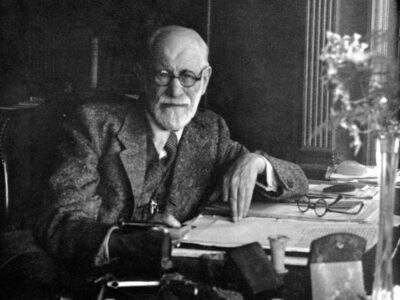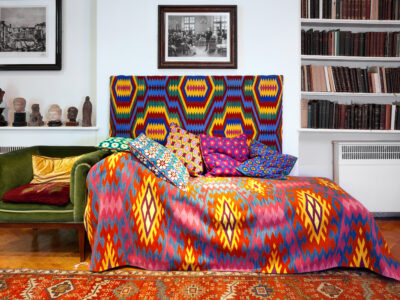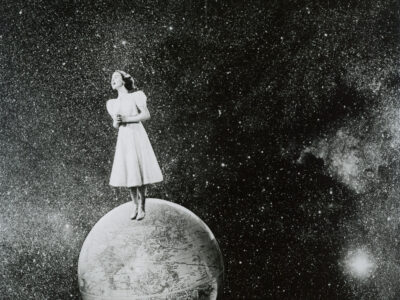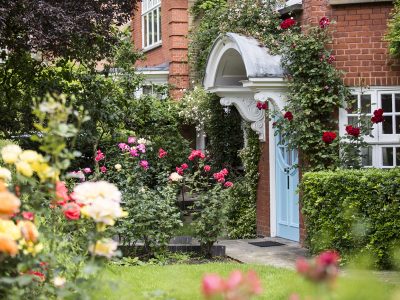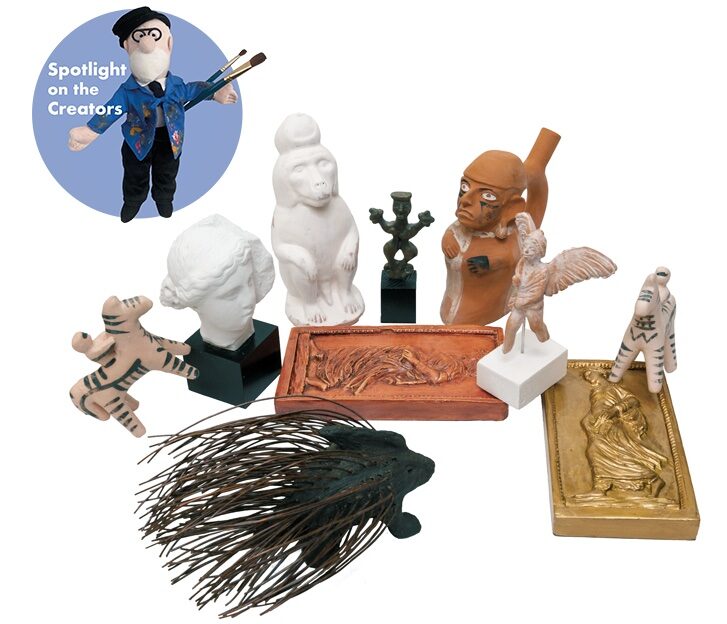
Spotlight on the Creators: Martha Todd
Freud’s Study is a collector’s dream. He surrounded himself with objects from the ancient world that acted as ‘tools’ for his thinking. The gods populating Freud’s desk always makes me feel as if I’m standing in a workshop or an artist’s studio as much as a psychoanalytic clinic. We have always wanted to carry over this atmosphere and feel of creative inspiration into the retail space. The ceramic artist Martha Todd has been the main creative spark behind this project.
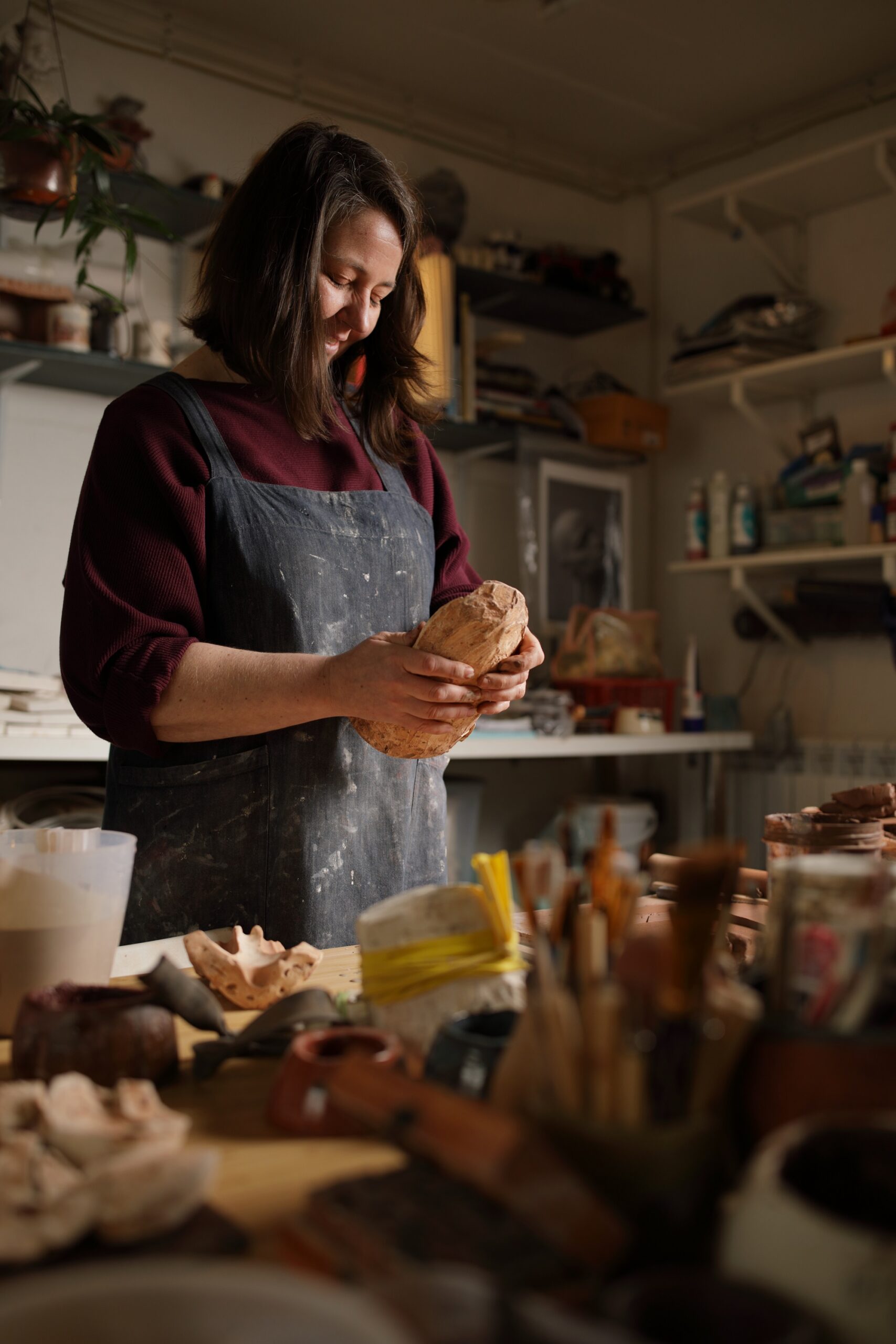
Martha Todd. Photo by Stefanou Photography
Martha manages to capture the character and spirit of Freud’s objects, which she transfers to each of her artworks, so our current day customers/collectors can build their own relationships with these figurines and use them as their own ‘tools’ for thinking. Such has been Martha’s influence that, as soon as a new exhibition is planned, I automatically reach out to her to discuss the possibility of creating a new piece based on an object from Freud’s collection. This tradition continued when we started to think about a new figurine for our Freud in Latin America exhibition, and there was no question as to what to choose, it had to be Freud’s Peruvian Vessel.
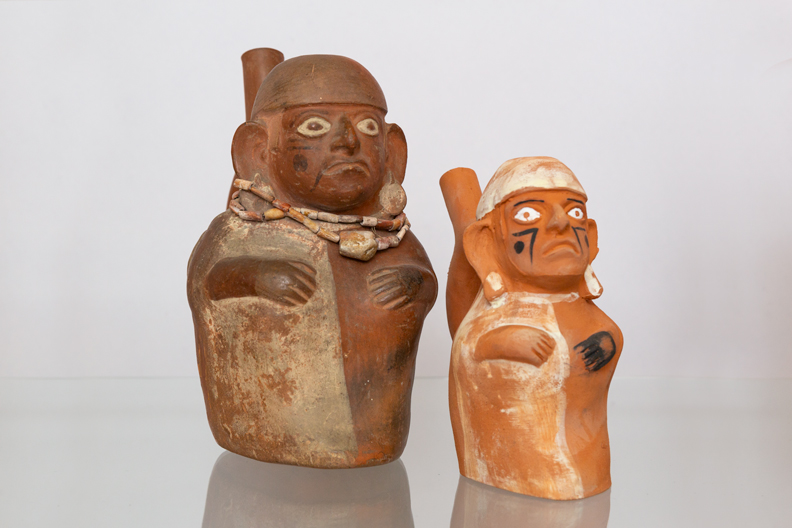
Sigmund Freud’s Peruvian Vessel with Martha’s Replica. Photo by Adriana Cudo
What was your first impression on seeing Freud’s original figurine and thinking about the brief?
I like making pieces that make me smile, and as soon as I saw the drinking vessel, I knew it was the perfect piece for me to recreate. The object has such character like so many of Freud’s antiquities. I always enjoy the more amusing and bizarre objects, they make my work so much more fulfilling. The functionality of the piece was also of interest. The idea that this was a drinking vessel that would be looped through a belt for use of transportation was intriguing.
Most of my work is non-functional, so this became a challenge in itself. I was also drawn to the way the piece was made. I believe these vessels were made with moulds for reproduction, the exact same way that I work today.
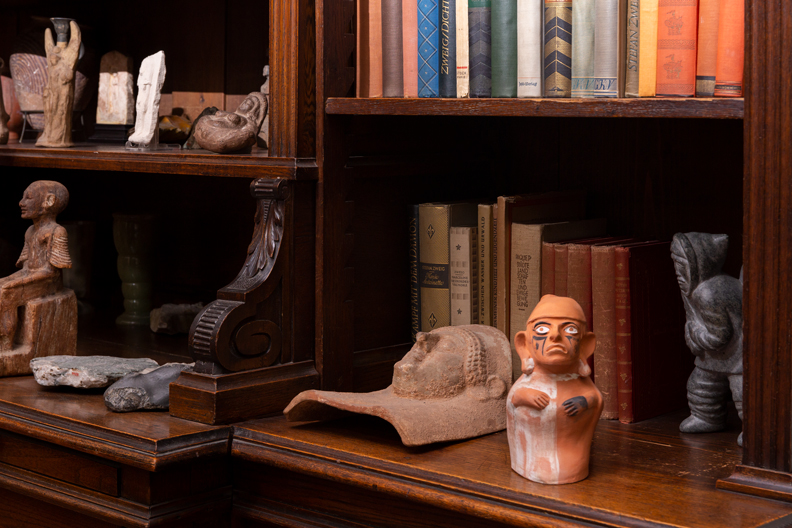
Martha’s Peruvian Vessel’s Replica in Freud’s Study. Photo by Adriana Cudo
How did the project develop? It would be great if you could tell something about your working methods.
I started by photographing the piece and getting measurements, ensuring that I had pictures from every angle. It is a challenge to sculpt an object without a physical three-dimensional model to copy, and so I have to make sure I have enough information to proceed with the task. I then set out to sculpt the object in my studio.
I have to sculpt larger that the required final piece as clay shrinks after firing, and so I upscaled my model around fifteen percent. I sculpted the figurative form first. I then needed to attach the piping for the loop and spout. These were clay coils that I extruded to ensure they were as accurate as they could be.
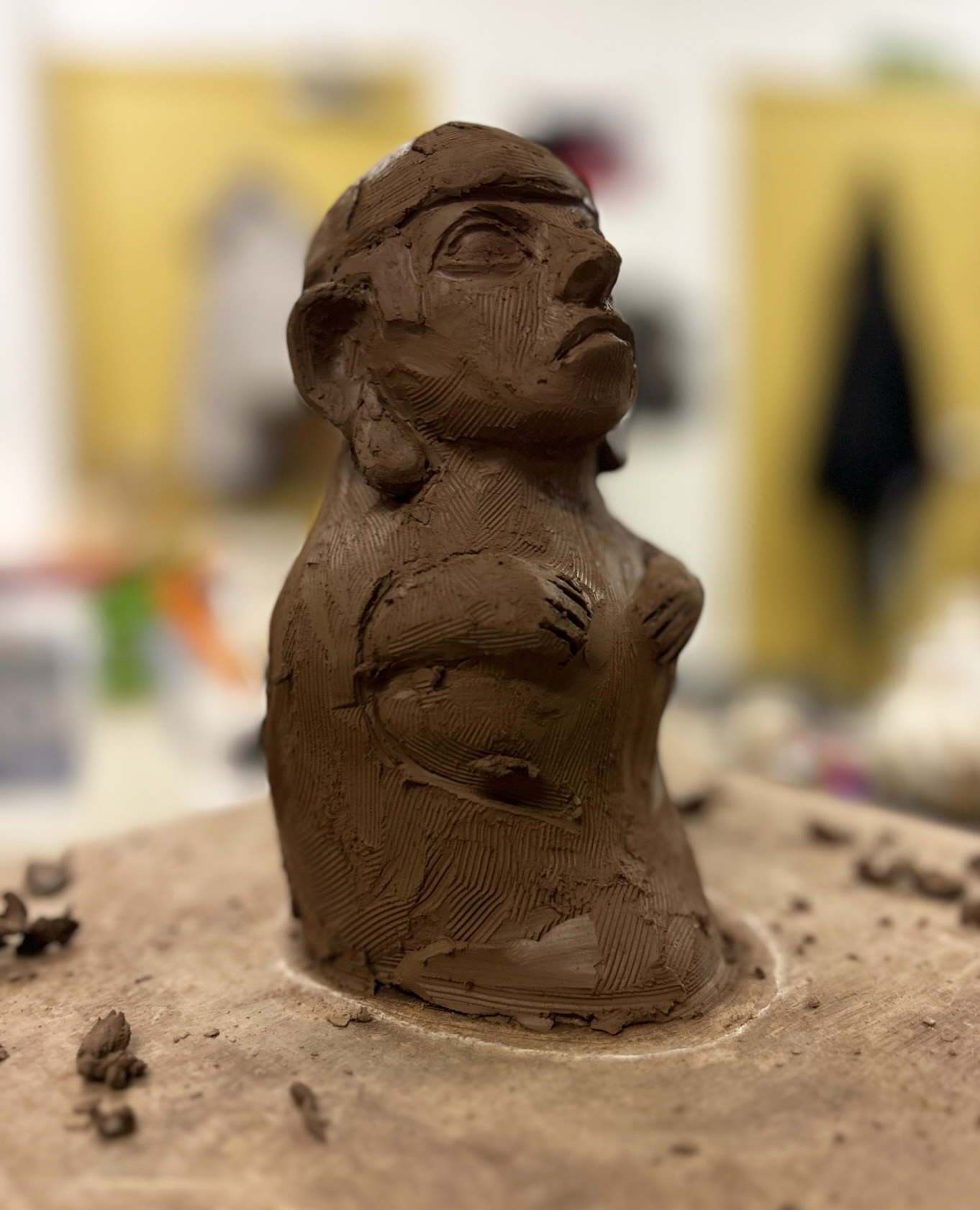
Sculpting the Peruvian Vessel Replica. Photo by Martha Todd
Recreating antiquities means that often you are trying to make something not look too perfect, and so I am always trying to get a balance between a well-made sculptural object and something that appears to have been through the test of time. I am never aiming for perfection, often enjoying the fact that each of pieces is slightly different.
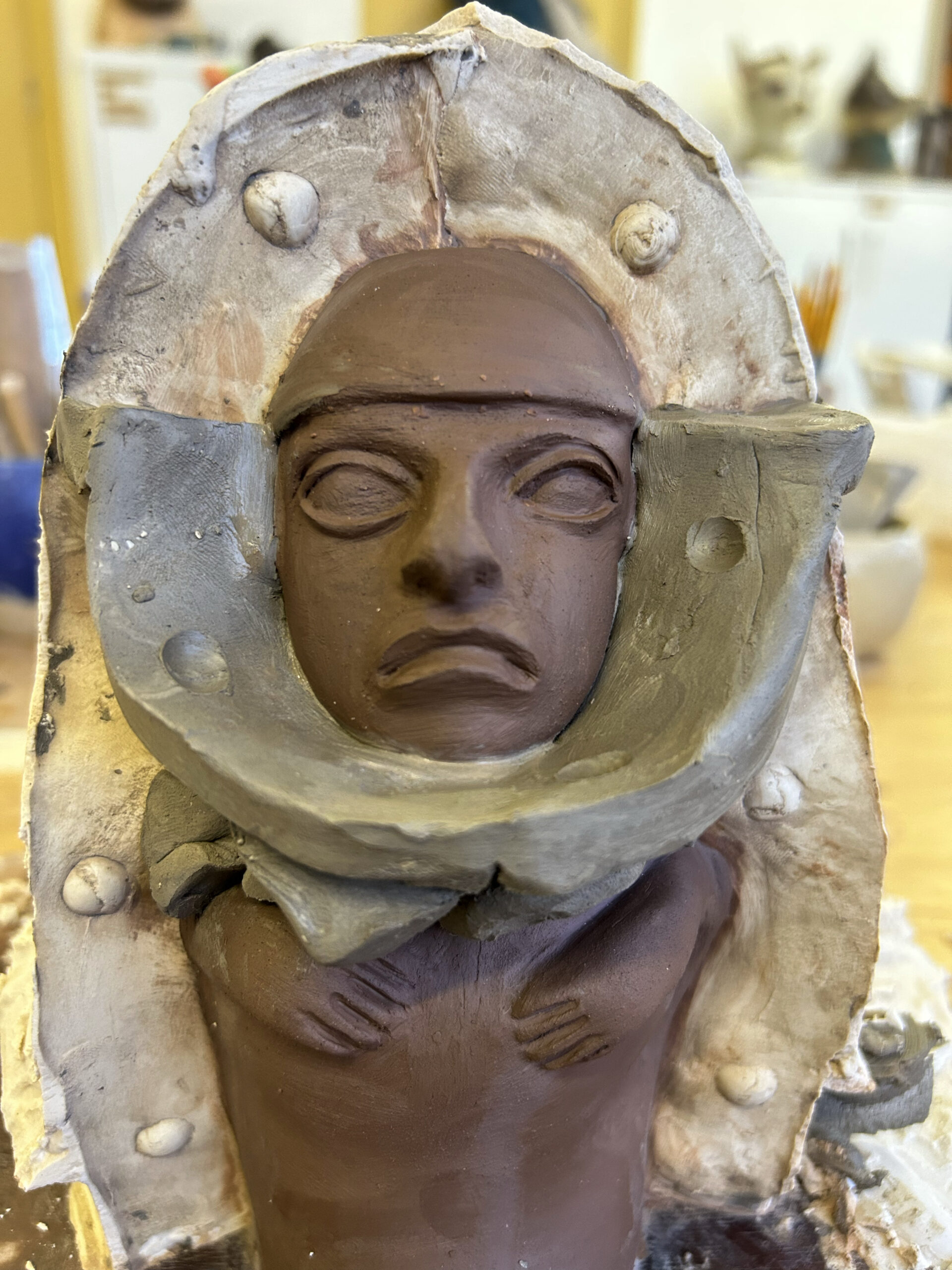
Making the Mould. Photo by Martha
Once I had completed the sculpture, I made a plaster slip casting mould. This is made in three pieces and once dried, I pour terracotta casting slip into it and leave to set for thirty minutes. The piece is then drained and left to go what we call ‘leather hard.’ At this point it is removed from the mould and cleaned up. Once the piece is dry, I then paint on the features. The objects are then fired in the kiln. The final touch is for me to sand the pieces, to give them a more weathered look.
Perhaps there is something anecdotal about the project that you would like to share.
I’m not sure I have an anecdote about this project. But I would like to say something about the enjoyment that I get out of recreating the pieces that I do for the Freud Museum shop. I have been working with the museum for many years and it has been a real privilege to get to see these objects up close and to be given the opportunity to reinterpret them. Each object I create has its own set of challenges. I have to consider materials, making techniques and reproduction methods. I don’t see my objects as reproductions, more of an interpretation of an object. This gives me a little more freedom to be creative and considerate of what people would like on their Freudian shelves!
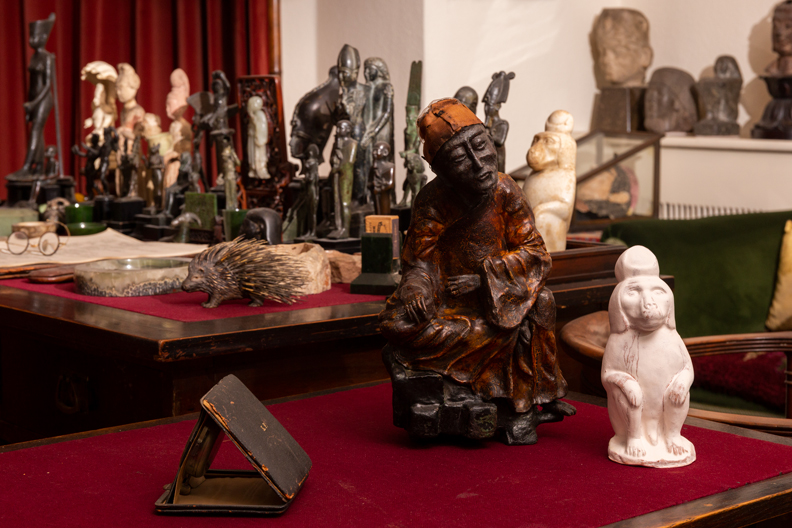
Martha’s Replica of Baboon in Freud’s Study. Photo by Adriana Cudo
My all-time favourite piece that I made for the museum, is my version of The Baboon of Thoth.
He still makes me smile and looks especially good in numbers on my studio bench. Like a little troop of baboons keeping an eye on me.
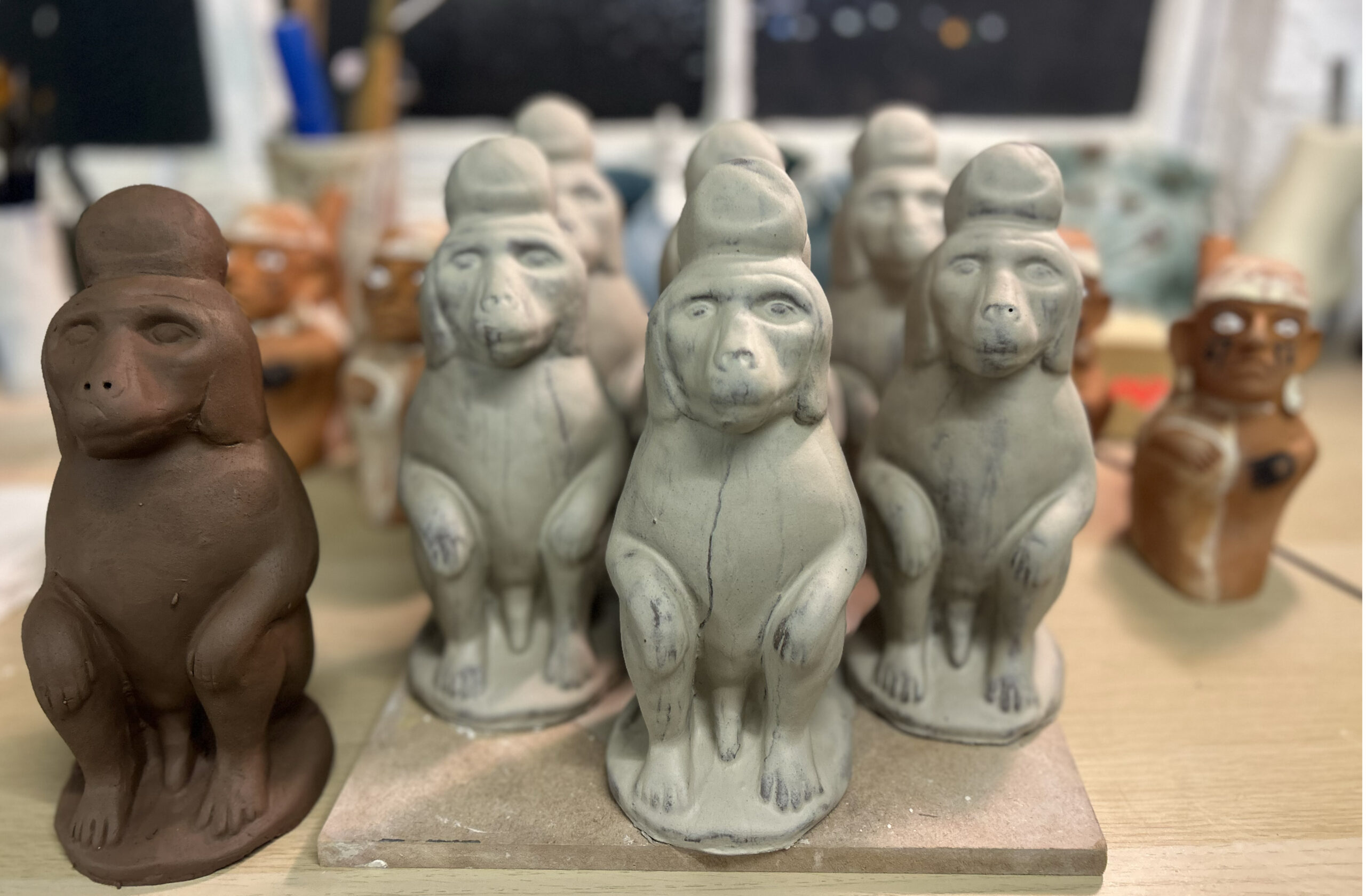
Troup of Baboons. Photo by Martha Todd
Martha Todd
You can find out more about Martha and her work on her website.
Shop Now!
Shop Martha’s figurines online.
Interviewed by Iveta Rozlapa, Retail Manager
Photos: Stefanou Photography / Adriana Cudo
